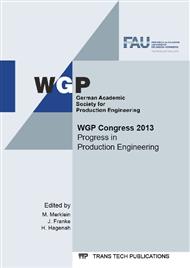p.3
p.11
p.19
p.27
p.34
p.42
p.53
p.61
Handling and Fixation of Permanent Magnets
Abstract:
Due to rapid developments within the family of rare-earth materials innovative electrical machines can nowadays be used as high efficient generators in various power, as well as rugged constructed machines for automobile battery based propulsion in hybrid and full electric vehicles. The production of different motor concepts spread into different design variants and creates complex variations especially regarding the rotor. Deriving from various research projects, the handling of the permanent magnet components is investigated, including the development of new assembly and fixation methods.
Info:
Periodical:
Pages:
3-10
Citation:
Online since:
September 2013
Authors:
Price:
Сopyright:
© 2013 Trans Tech Publications Ltd. All Rights Reserved
Share:
Citation:


